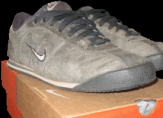Guam
North Pacific OceanLevel of surfing
Competent
Quality of surf
Good
Call code
1671
Net code
gu
Area
541
Coastline
125 km
Climate
Tropical Marine
Hazards
Severe Storms
Best Months
August - October
Population
170000
Currency
United Sates Dollar (USD)
Time Zone
KILO (UTC+10)
Special Requirements
Private Beaches
surfing

Onionhound: Guam reefscape; 2005
A pitching deck, the creak of well worn timbers, the cracking of sail and canvas...tied to the mast. Things have changed a little I guess from when Jack London and Josef Conrad wrote their haunting Pacific infused epics but it hasnt changed everythwhere. There are corners of this earth where that mythos still holds true, and most of those corners are here in the South Pacific.
The main source of swell here is from the intense lows that circle the earth south of Australia, these lows spin off northwards with blessed regularity, peppering the entire region with generous SE to SW groundswell from March to September. Australia and New Zealand see the bulk of these swells. These countries cast a very tall shadow across the rest of the Pacific and hence many other islands in their wake can suffer from swell difusion. December to February is cyclone season. Unpredictable cells can deliver swell in a 360 radius, lighting up rarely breaking reefs and points facing every conceivable direction.
The South Pacific trade winds are some of the most consistent in the world, generally from the East with slight seasonal variation. This is the largest Ocean on the planet and these winds easily generate regular rideable swell. Onshore conditions can be a problem on east facing coastlines but peeling yourself out for an early surf will usually bring some relief.
In the North Pacific it is the intense lows descending from the Aleutians that deliver NE to NW swells from October to March. Hawaii is ideally placed to make best use of this energy but other coastlines in the region have their own less publicised and far less crowded gems.
Jun to October also sees rarer hurricane swell radiate out from southern Mexico. This energy is often felt right throughout Polynesia. With so many energy vectors at work it is very hard not to find a wave.
Places such as Guam that offer rideable options on every coast will ensure that regadlesss of the conditions, somewhere there will be a wave. In fact quite often there will be a very good one.
what to pack

Cserlajos: Nike Cortez 'TB trainers; 7 January 2007
Pack light when travelling to Guam, as it is very hot there (lightweight clothing in general), and drink a lot of water (bottled water is recommended). There's no need to bring your expensive belongings, but make sure you take a good sunscreen (SPF 30+); a good insect repellent wouldn't hurt much either.
Comfortable walking shoes will be essential.






